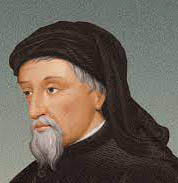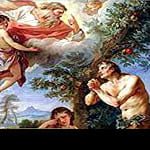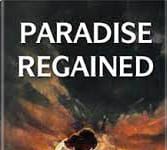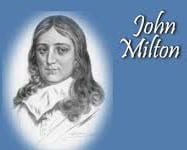Chaucer | The Nuns Priests Tale as a Fable
Chaucer | The Nuns Priests Tale as a Fable
A fable is a short narrative either in verse or prose with a moral ending. The main features of a fable are— (i) the character are not human beings but beasts, birds, supernatural agents or any inanimate objects. (ii) Characters are mostly type representing frailties, foibles, vices, sins or virtues of men and women living in society. (iii) Allegorical or metaphorical in device (iv) humorous or satirical in tone and (v) ends in moral lessons expressed by the characters or by the narrator. For example, – Aesop’s Fables in Greek, Roman de Renard in French, Vishnu Sharma’s Hitopadesh in Sanskrit etc. English literature is not poor in fables. Geoffrey Chaucer’s ‘The Nonnes Preestes Tale’ (The Nun’s Priest’s Tale) is a fable with all the characteristics of a fable in it. Now let us illustrate the tale as a fable.
The first feature of ‘The Nonnes Preestes Tale’ (The Nun’s Priest’s Tale) is that its main characters are birds and beasts, namely cocks by the names & Chauntecleer and Pettelote and a fox by the name of Russell. The poet Geoffrey Chaucer has narrated how the cock Chauntecleer was induced by the flattery of the fox Russell and how in turn the fox lost its Victim by being induced by the sweet words of the cock. The poet has attributed human characteristics upon them as he says:
‘Tor thilke tyme, as I have understonde
Beestes and brides kounde speke and synge.’
Besides Chauntecleer, Pertelote and Russell, these are allusions of some other animals such as – the dogs by the names of Colle, Talbot and Gerlands. But they have played little roles in the tale.
Secondly, the characters are mostly type rather than an individual. Here Chauntecleer represents all the cocks. So Pertelote stands for as a type of all the hens and likewise, the fox has shrewdness of all the foxes of its kind. The crowing of the cock at definite hours of the day is a type of all cocks; but he gives a touch of individuality by invoking highly poetic imageries, as:
‘His voys was murier than the murie orgon
On massedayes that in the chirche gon
We sikerer was his crowing in his logge
Than is a clokke or an abbey orlogge.’
In addition to this, the scene of the fox’s flattery and chasing scene is also typical which is common in any village by woods.
Thirdly, the device of representing the tale of the cock and fox is allegorical. An allegory is a story in verse or prose of a higher order under the guise of a lower one. In that sense it is allegory of a couple of humans—husband and wife. The cock Chauntecleer stands for all human husbands and the hen Pertelote stands for all the human wives. The relationship between the cock and the hen is the relationship between a human husband and wife. Husbands are generally proud, wayward and authoritative over their wives. So is Chauntecleer. He does not pay any attention to the hen’s suggestion. He overcomes the hen’s suggestion by invoking stronger arguments in favour of his view that dreams have significances. Pertelote also represents her insolence by scolding Chauntecleer for being afraid of a mere dream. Thus their relationship is truly the allegorical portraiture of conjugal relationship of any human husband and wife. In boarder sense what is allegorical is metaphorical also. If we set aside the fox and cock episode from the poem it would be a specimen of perfect allegory. In other words to say, ‘‘The Nun’s Priest’s Tale’ moves on two levels —the animal and human.
Fourthly, ‘The Nun’s Priest’s Tale’ is humorous as well as satirical from the very beginning to the very end. Among the abundant use of humorous elements in the tale, the mention may be made of Pretelote’s methods of diagnosis that some excess of humour on bile in the blood of Chauntecleer is responsible for his dreadful dream. Thus we are greatly amused to hear Chauntecleer’s compliments to madam Pertelote on the beauty of her face just any Knight might admire the beauty of his sweet-heart. Likewise the description of the lamentation of the hens when Chauntecleer was carried off by the fox, the description of the chasing scene, Chauntecleer’s puffing up with the vanity by the fox’s flattery, the cock’s flattery to get free from the mouth of the fox, again the fox’s flattery to entrap the cock for the second time – all are highly humorous and satirical. And it is these satires that add a new and ever-pleasing flavour to the tale.
Fifthly the tale of the cock and the fox has come to the conclusion with the two distinct morals which have been expressed by the mouth of Chauntecleer and the fox Russell. Chauntecleer concludes –
“For he that wynketh whan he sholde see
Al wilfully God lat hym nevere thee.’’
After this, the fox Russell extracts his experience what he has learnt from his encounter with the Cock.
‘……. God yebe thym meschaunce
That is so undiscreet of governance
That jangleth whom he sholde holde his pees!’
From the above analysis of the poem, ‘The Nun’s Prieste’s Tale’ we can come to the following conclusions.
First it is a perfect beast fable as all the characteristic of a fable are abundantly present in it.
Secondly beside being it a beast fable it is a higher kind of comedy because comic elements predominate over all the elements.
Thirdly, the poet Geoffrey Chaucer made so much allusions and references in the tale which generally suit to a heroic kind of poetry, It might be reasonable to call the ‘Nonnes Preestes Tale’ (‘The Nun’s Priest’s Tale’) heroic fable.
Fourthly, the cock and the fox story in the form of folktale has been existing in French, Italian and in some other languages also but Chaucer, by his art of narration, gives it an exceptional grand style, which makes it a grand thing in the whole range or English fables. 0 0 0.
The Nuns Priests Tale as a Fable
You May Like:
- ‘Poetry is the Criticism of LIfe’ Mathew Arnold-An Explanation
- Contributions of S T Coleridge to the History of Literary Theory and Criticism
The Nuns Priests Tale as a Fable
N. B. The article ‘The Nuns Priests Tale as a Fable’ originally belongs to the book entitled ‘Critical Essays on English Poetry‘ by Menonim Menonimus.
The Nuns Priests Tale as a Fable
Books on Literary Criticism by M. Menonimus:
- World Short Story Criticism
- World Poetry Criticism
- World Drama Criticism
- World Novel Criticism
- World Essay Criticism
- Indian English Poetry Criticism
- Indian English Poets and Poetry Chief Features
- Emily Dickinson’s Poetry-A Thematic Study
- Walt Whitman’s Poetry-A Thematic Study
- Critical Essays on English Poetry
- Tawfiq al-Hakim’s Novel: Return of the Spirit-An Analytical Study
- Tawfiq al-Hakim’s Novel: ‘Yawmiyyat Naib Fil Arayaf’-An Analytical Study
- Analytical Studies of Some Arabic Short Stories
- A Brief History of Arabic Literature: Pre-Islamic Period (500 AD-622 AD)
- A Brief History of Arabic Literature: Early Islamic Period (622 AD-661 AD) …
Related Search:
- The Nun’s Priest’s Tale
- Chaucer Nuns Priests Tale as a Beast Fable
- The Canterbury Tales
- The Art of Characterisation of Chaucer
- The Art of Characterisation in Chaucer’s Canterbury Tales
- The Nuns Priests Tale as a Fable











